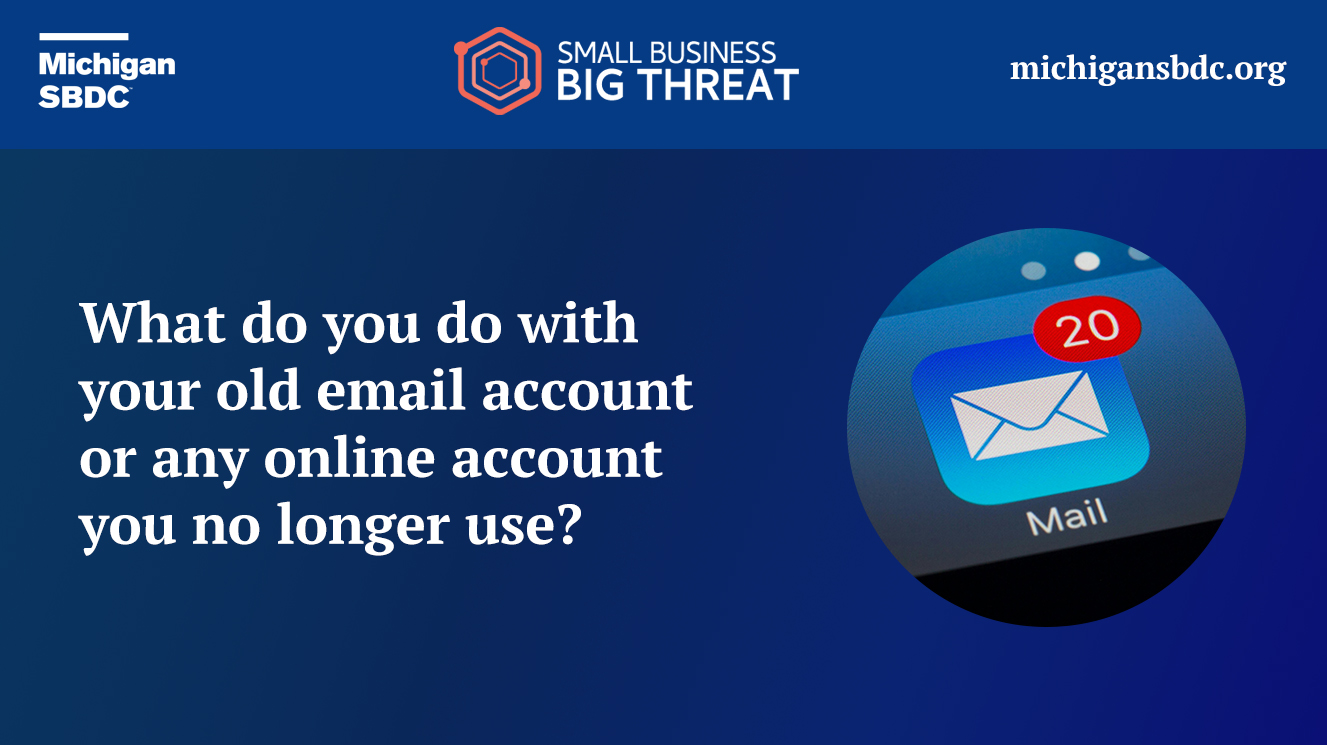
What do you do with your old email account or any online account you no longer use? Were you aware these old accounts pose a cybersecurity and privacy risk? According to Bitdefender, a leading cybersecurity company, “Any public-facing information in a dormant online account significantly increases the risk of data theft, non-consensual data use and even identity theft.”
These old accounts may have a treasure trove of personal information. Some of that personal information may be things like your full name, payment information, birthdays, phone numbers, passwords, and other personally identifiable information (PII). You may also be continuing to share private data with other third party providers who are integrated into this account.
Worse yet, a cybercriminal may take over your account and pretend they are you, contacting those in your address book. They may even make purchases with the account if you have saved payment information. A cybercriminal will also attempt to find your current accounts and attempt to gain access to those via your old account.
Having an old and unused account really creates countless opportunities for a cybercriminal.
Deactivate and delete
To stop the risk of a dormant user account, it’s important to delete them. Most online services will allow for deletion. You may be able to delete right in the settings or you may need to open a support ticket requesting to delete it. If the account has information you do not want to lose, consider downloading its contents and saving to your current account or on a storage device.
Multifactor authentication (MFA)
One of my favorite cybersecurity solutions is MFA. It is one of the best ways to protect your accounts from unauthorized access. If MFA is enabled on a forgotten account, the cybercriminal will have much more difficulty accessing the account. A hidden perk of MFA, you may even receive an MFA alert for your old email account!